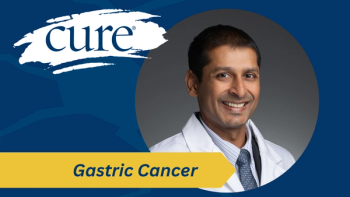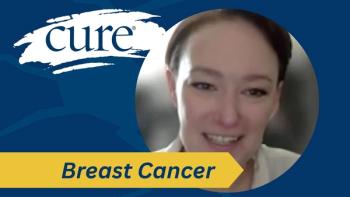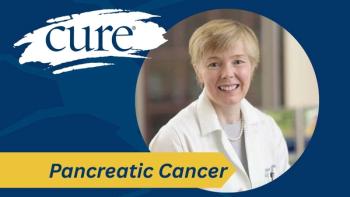
Younger Patients With Lung Cancer Often Have Targetable Biomarkers

Key Takeaways
- Younger lung cancer patients frequently have targetable biomarkers, allowing for personalized therapies that can improve survival rates.
- Targeted therapies differ from traditional treatments, focusing on specific genetic changes, but may lead to resistance and require ongoing testing.
Younger patients with lung cancer are more likely to have mutations that allow for targeted therapies, which can lead to more personalized and effective treatment.
Younger patients with lung cancer are more likely to have biomarkers in their cancer cells, which can guide targeted therapies for personalized care, according to Dr. Arthi Sridhar during a presentation at CURE’s Educated Patient® Lung Cancer Summit.
“Young patients with lung cancer are more likely to have biomarkers in their cancer cells that can be targeted,” Sridhar said during the presentation. “These are usual or oral therapies, and they're different from traditional chemotherapies, and they are so important because they give access to our patients who receive personalized care. And there is data to show that if you have a targetable mutation, you should be receiving the drug for that mutation, and those patients do live longer.”
Sridhar is an assistant professor in the Department of Internal Medicine at UT Southwestern Medical Center, located in Dallas, Texas.
Research data has shown that anywhere from 52% to 91% of young patients with lung cancer have targetable mutations, as well as a four times higher frequency of ALK, KRAS G12D and EGFR mutations.
Sridhar discusses how therapy is often a shared decision between the patient and their physician team. Cancer cells can become resistant to targeted therapies, and research teams may often biopsy and test the cells again for new targets. Patients can access treatments that are not available to the public through participating in clinical trials, according to Sridhar.
What are Safety Concerns for Targeted Therapies?
Common side effects of targeted therapies include skin reactions, hand-foot syndrome, cognitive impairment, sleep disturbances, gastrointestinal, fatigue and elevated blood pressure.
"Immune therapies cause side effects by activating the immune system. Of course, we like that when it attacks the tumor, but we don't like it so much when it attacks the rest of the body,” said Sridhar.
What are Traditional Methods and Targeted Therapies?
Surgery, chemotherapy and radiation have long been the foundation of cancer treatment. Surgery removes the tumor from the body, chemotherapy uses drugs that kill fast-growing cells, including cancer cells, and radiation uses high-energy rays or particles to destroy cancer cells.
Targeted therapy attacks specific genetic changes in cancer to slow or stop its growth. Immunotherapy boosts the body’s immune system to recognize and fight cancer. There are two types of targeted therapies: one is called a small molecule inhibitor, and one is called a monoclonal antibody. Small molecule inhibitors target the changes inside the cancer cells and their DNA.
"They work in many different ways. They find mutations in genes and then stop the cells from growing,” said Sidhar. “They can even change the proteins in cancer cells, accelerating cancer cell death. They can increase the visibility of cancer cells to your immune cells, they can carry chemicals that are then released into cancer cells, like in HER2. Sometimes they can even carry radiation into cancer cells and thereby kill the cells."
Targeted therapies may stop working when the cancer progresses, meaning it continues to grow despite ongoing treatment. This can happen in two ways: primary resistance, when the treatment doesn’t work from the start, and acquired resistance, which can develop at any point during care.
Multidisciplinary Approach, and Shared Decision Making
Multidisciplinary cancer conferences, often called tumor boards, are meetings where healthcare professionals from different specialties come together to discuss complex cancer cases, according to Sridhar. These discussions aim to create well-rounded treatment plans tailored to each patient’s needs. Participants may include oncologists, surgeons, radiologists, pathologists, pharmacists, pulmonologists, nurses, palliative care specialists and social workers.
Sridhar then discusses shared decision-making, a collaborative process that helps patients and their care teams choose the most appropriate treatment. This approach considers a range of factors, including the patient’s age, overall health, symptoms, quality of life and willingness to undergo aggressive treatment. It also considers the characteristics of the disease — such as how advanced it is, where it has spread and whether the brain is involved — as well as molecular details like specific mutations, co-mutations and changes seen in circulating tumor DNA.
For more news on cancer updates, research and education, don’t forget to





